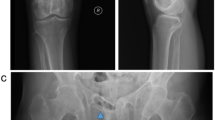Abstract
Hypercalcemia is usually secondary to one etiology, although two coexisting etiologies can rarely cause hypercalcemia. Here, we report a 47-year-old woman with hypercalcemia caused by comorbid parathyroid adenoma and pulmonary tuberculosis. Primary hyperparathyroidism is the most common cause of hypercalcemia. Tuberculosis is a rare cause of hypercalcemia, but Japan continues to have an intermediate tuberculosis burden. Therefore, tuberculosis should be considered as a cause of hypercalcemia in Japan. Patients with tuberculosis are often asymptomatic, making the diagnosis difficult. In the previous cases in which these diseases coexisted, one disease was diagnosed after treatment of the other. In our case, the very high 1,25-dihydroxyvitamin D level (162 pg/mL) helped us to diagnose asymptomatic tuberculosis and both diseases were diagnosed promptly. It is necessary to consider comorbidities, including tuberculosis in a case with a very high 1,25-dihydroxyvitamin D level. We report a valuable case in which the early diagnosis and treatment of tuberculosis and primary hyperparathyroidism prevented the spread of tuberculosis.


Similar content being viewed by others
References
Lafferty FW. Differential diagnosis of hypercalcemia. J Bone Miner Res. 1991;6(Suppl 2):S51–9 (discussion S61).
Hung KH, Chen FC, Hu YH, Chen JB, Hsu KT. Incidental primary hyperparathyroidism in a hypercalcaemic woman with tuberculous peritonitis. Int J Clin Pract. 2005;59(Suppl. 147):64–6.
Kar DK, Agarwal G, Mehta B, Agarwal J, Gupta RK, Dhole TN, et al. Tuberculous granulomatous inflammation associated with adenoma of parathyroid gland manifesting as primary hyperparathyroidism. Endocr Pathol. 2001;12:355–9.
Jacob PM, Sukumar GC, Nair A, Thomas S. Parathyroid adenoma with necrotizing granulomatous inflammation presenting as primary hyperparathyroidism. Endocr Pathol. 2005;16:157–60.
Tuberculosis Surveillance Center. Tuberculosis in Japan—annual report 2018. Tokyo: Department of Epidemiology and Clinical Research, the Research Institute of Tuberculosis; 2018.
Christensen SE, Nissen PH, Vestergaard P, Heickendorff L, Rejnmark L, Brixen K, et al. Plasma 25-hydroxyvitamin D, 1,25-dihydroxyvitamin D, and parathyroid hormone in familial hypocalciuric hypercalcemia and primary hyperparathyroidism. Eur J Endocrinol. 2008;159:719–27.
Tebben PJ, Singh RJ, Kumar R. Vitamin D-mediated hypercalcemia: mechanisms, diagnosis, and treatment. Endocr Rev. 2016;37:521–47.
Hanai S, Shinzato T, Inazu D, Tokuda Y. Hypercalcaemia caused by active pulmonary tuberculosis in an elderly person without fever or pulmonary symptoms. BMJ Case Rep. 2017;2017:bcr2016217797.
Ralph AP, Rashid Ali MRS, William T, Piera K, Parameswaran U, Bird E, et al. Vitamin D and activated vitamin D in tuberculosis in equatorial Malaysia: a prospective clinical study. BMC Infect Dis. 2017;17:312.
Bilezikian JP. Primary hyperparathyroidism. J Clin Endocrinol Metab. 2018;103:3993–4004.
Walker MD, Silverberg SJ. Primary hyperparathyroidism. Nat Rev Endocrinol. 2018;14:115–25.
Global tuberculosis report 2019. Geneva: World Health Organization; 2019. Licence:CCBY-NC-SA3.0IGO.
Lawn SD, Zumla AI. Tuberculosis. Lancet (Lond, Engl). 2011;378:57–72.
Komaba H, Ikeda K, Fukagawa M. Familial hypocalciuric hypercalcemia. Nihon Naika Gakkai Zasshi (J Jpn Soc Intern Med). 2007;96:681–7.
Christensen SE, Nissen PH, Vestergaard P, Mosekilde L. Familial hypocalciuric hypercalcaemia: a review. Curr Opin Endocrinol Diabetes Obes. 2011;18:359–70.
Isaksen T, Nielsen CS, Christensen SE, Nissen PH, Heickendorff L, Mosekilde L. Forearm bone mineral density in familial hypocalciuric hypercalcemia and primary hyperparathyroidism: a comparative study. Calcif Tissue Int. 2011;89:285–94.
Eller-Vainicher C, Falchetti A, Gennari L, Cairoli E, Bertoldo F, Vescini F, et al. Diagnosis of endocrine disease: evaluation of bone fragility in endocrine disorders. Eur J Endocrinol. 2019;180:R213–32.
Schlatter E. Who wins the competition: TRPV5 or calbindin-D28K? J Am Soc Nephrol. 2006;17:2954–6.
Author information
Authors and Affiliations
Corresponding author
Ethics declarations
Conflict of interest
None of the authors declare any competing interests.
Informed consent
Informed consent was obtained from the patient included in this case report.
Additional information
Publisher's Note
Springer Nature remains neutral with regard to jurisdictional claims in published maps and institutional affiliations.
About this article
Cite this article
Kamejima, S., Yamamoto, I., Kobayashi, A. et al. Hypercalcemia caused by comorbid parathyroid adenoma and pulmonary tuberculosis. CEN Case Rep 10, 1–5 (2021). https://doi.org/10.1007/s13730-020-00509-2
Received:
Accepted:
Published:
Issue Date:
DOI: https://doi.org/10.1007/s13730-020-00509-2




